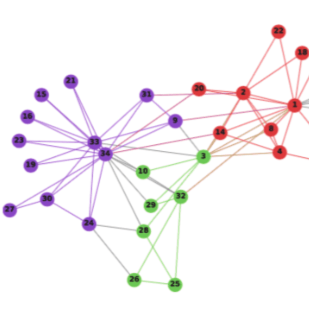Unsupervised node embedding methods (e.g., DeepWalk, LINE, and node2vec) have attracted growing interests given their simplicity and effectiveness. However, although these methods have been proved effective in a variety of applications, none of the existing work has analyzed the robustness of them. This could be very risky if these methods are attacked by an adversarial party. In this paper, we take the task of link prediction as an example, which is one of the most fundamental problems for graph analysis, and introduce a data positioning attack to node embedding methods. We give a complete characterization of attacker's utilities and present efficient solutions to adversarial attacks for two popular node embedding methods: DeepWalk and LINE. We evaluate our proposed attack model on multiple real-world graphs. Experimental results show that our proposed model can significantly affect the results of link prediction by slightly changing the graph structures (e.g., adding or removing a few edges). We also show that our proposed model is very general and can be transferable across different embedding methods. Finally, we conduct a case study on a coauthor network to better understand our attack method.
翻译:未经监督的节点嵌入方法(如DeepWalk、LINE和Node2vec)由于其简单和有效性,吸引了越来越多的兴趣。然而,尽管这些方法在各种应用中证明是有效的,但现有的工作没有分析这些方法的稳健性。如果这些方法受到敌对方的攻击,这可能会非常危险。在本文中,我们把连接预测任务作为一个例子,这是图表分析的最根本问题之一,并将数据定位攻击引入节点嵌入方法。我们对攻击者的公用设施作了全面的描述,并为两种流行节点嵌入方法(DeepWalk和LINE)提出了对抗性攻击的有效解决方案。我们用多个现实世界图形评估了我们拟议的攻击模式。实验结果显示,我们提议的模型可以通过稍微改变图形结构(如添加或删除几个边缘)对连接预测结果产生重大影响。我们还表明,我们提议的模式非常笼统,可以跨越不同的嵌入方法。最后,我们对共同作者网络进行案例研究,以更好地了解我们的攻击方法。




